Sat 12 Apr 2014
A TV Review by Jonathan Lewis: THE TWILIGHT ZONE “Nightmare at 20,000 Feet” (1963).
Posted by Steve under Reviews , TV Science Fiction & Fantasy[4] Comments
“NIGHTMARE AT 20,000 FEET.” Episode 123 of The Twilight Zone (CBS TV). Original air date: October 11, 1963. Starring William Shatner. Written by Richard Matheson. Directed by Richard Donner.
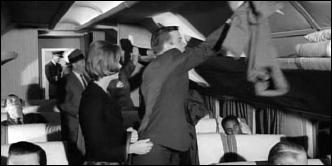
Much has undoubtedly been written about “Nightmare at 20,000 Feet,” an iconic Twilight Zone episode. The show, however, is well worth revisiting, particularly in light of writer Richard Matheson’s passing last year and of director Richard Donner’s recent announcement that he hopes to film a sequel to his 1985 cult classic, The Goonies.
This 25-minute black & white episode is not merely a vivid small screen representation of psychological torment. It also serves as an excellent reference point for those seeking to connect seemingly disparate elements of twentieth-century science fiction, horror, and popular culture, from airplanes to zombies.
The plot of “Nightmare at 20,000 Feet,” based on a 1961 Richard Matheson short story of the same name, unfolds as follows. A salesman named Robert Wilson, portrayed with great dramatic effect by a youthful William Shatner in his pre-Star Trek days, spots a bizarre creature — a gremlin — tampering an aircraft’s engine while the plane is in flight.
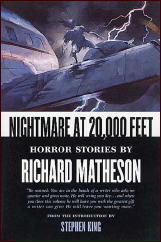
It’s a Twilight Zone episode, so of course there’s a twist. Months earlier, Wilson had experienced a “nervous breakdown†while on an airplane. Now, he is back on a plane for the first time since his stay in a sanitarium. Accompanying him is his wife, played by Christine White. But who is going to believe a man who has suffered from mental illness, especially when he’s the only one who sees the gremlin (Nick Cravat in furry suit that now looks more silly than scary) out on the wing, attempting to tamper with the plane?
Gremlins, of course, have not been the most prominent of monsters in twentieth-century popular culture. Unlike vampires and demons, which have a long pedigree, the notion of creatures called gremlins likely originated in the 1920s as the figment of British pilots’ collective imaginations. They were prone to mechanical mischief and blamed for tampering with aircraft.
The best-known literary work about these modernist monsters is Roald Dahl’s children’s book, The Gremlins (1943). Dahl, of course, would go on to write numerous children’s books, screenplays, and short stories.
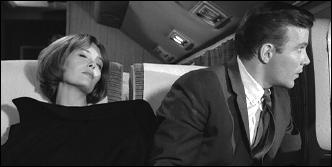
Gremlins, of course, had their moment in the sun (pun intended), in the 1984 film, Gremlins. Written by Chris Columbus and directed by Joe Dante, with Steven Spielberg as the film’s executive producer, Gremlins went on to become an American cult classic.
In the Twilight Zone episode, the character of Wilson mentions gremlins during the flight and alludes to their role in tinkering with aircraft “during the War.†But the gremlin in “Nightmare at 20,000 Feet” is, in many ways, peripheral to the episode. It’s a human story, one that remains compelling to this day. It touches on the deep-seated human fear of being, or feeling, completely alone in the midst of chaos.
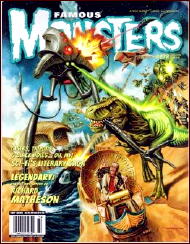
Sure, Wilson is with his wife, the pilot, and other passengers. But no one believes him. That’s when, of course, he decides to take matters on his own hands. Without giving away how the story ends, I’ll just mention that there’s an easily accessible gun on the airplane and the emergency window gets opened. Matheson’s story is still incredibly fresh. Optimists take note: there’s a redemptive aspect for Shatner’s character at the very end.
This leads me to the March/April 2014 issue of Famous Monsters, which includes an extensive tribute to the episode’s writer, Richard Matheson. In a compelling passage, Richard Christian Matheson, the author’s son, wrote as follows:
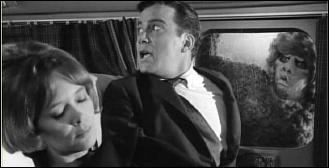
Although Richard Christian Matheson doesn’t specifically allude to any particular characters, I can see how this characterization of Matheson’s thinking could apply to the aforementioned Robert Wilson. Indeed, one can hardly watch Shatner’s performance without feeling for his character.
In conclusion, “Nightmare at 20,000 Feet” is more than just a singular episode in the Twilight Zone corpus. It is a cultural artifact in its own right. Aside from Rod Sterling, a legend all his own, the three main men involved in this particular episode’s creation — Shatner, Donner, and Matheson — collectively went on to create a vast body of work that includes some of the best late twentieth-century works in science fiction and popular culture.
And even though the episode is over fifty years old and the gremlin looks a bit goofy, “Nightmare at 20,000 Feet” is an extremely well-written story and an episode worth watching again, if you haven’t done so recently.
Reference: Famous Monsters #272, March/April 2014.
April 12th, 2014 at 6:25 pm
Gremlins also figure in a couple of Warner’s best Looney Tunes, especially one where they literally dismantle a plane out from under Bugs Bunny. Of course those were Nazi gremlins.
RE 20,000 feet I can’t watch it now without thinking of the episode of Third Rock From the Sun with Shatner as the big head arriving at the airport.
Matheson was a remarkable writer, his insight into character and imagination producing some spectacular stories, which may be why the TZ episode Steel with Lee Marvin that he wrote recently showed up as a blockbuster movie with Hugh Jackman. His work does have a timelessness which is why there were three versions of I Am Legend and one sequel to the Will Smith one.
I would have to pick the novel The Incredible Shrinking Man as my favorite of his novels (and it’s a difficult choice) only because he pulls off taking what should be an unlikely pulp sf tale more Thrilling Wonder than Astounding SF and turning it into a profound statement on the nature of the universe and life itself. But it’s strictly a first among equals situation.
Shatner to John Lithgow (who played the Shatner role in the Twilight Zone Movie version of the story): It was terrifying, I saw something on the wing.
Lithgow: You too?
April 12th, 2014 at 6:33 pm
I remember seeing the Lithgow version in the “Twilight Zone” movie well before I even knew the original Shatner one existed. I must have been 13 or 14 and saw it on Cable TV. Stayed in my mind for a long time.
I believe there is also a “The Simpsons” episode where this is referenced. If there’s not a “Family Guy” one, well, there should be.
April 12th, 2014 at 6:48 pm
John Lithgow:
https://www.youtube.com/watch?v=ctHltBauGc8
April 12th, 2014 at 7:34 pm
This show was the reason why my late wife always refused to look out the window in an airplane. My own favorite Matheson is his novel A STIR OF ECHOES.